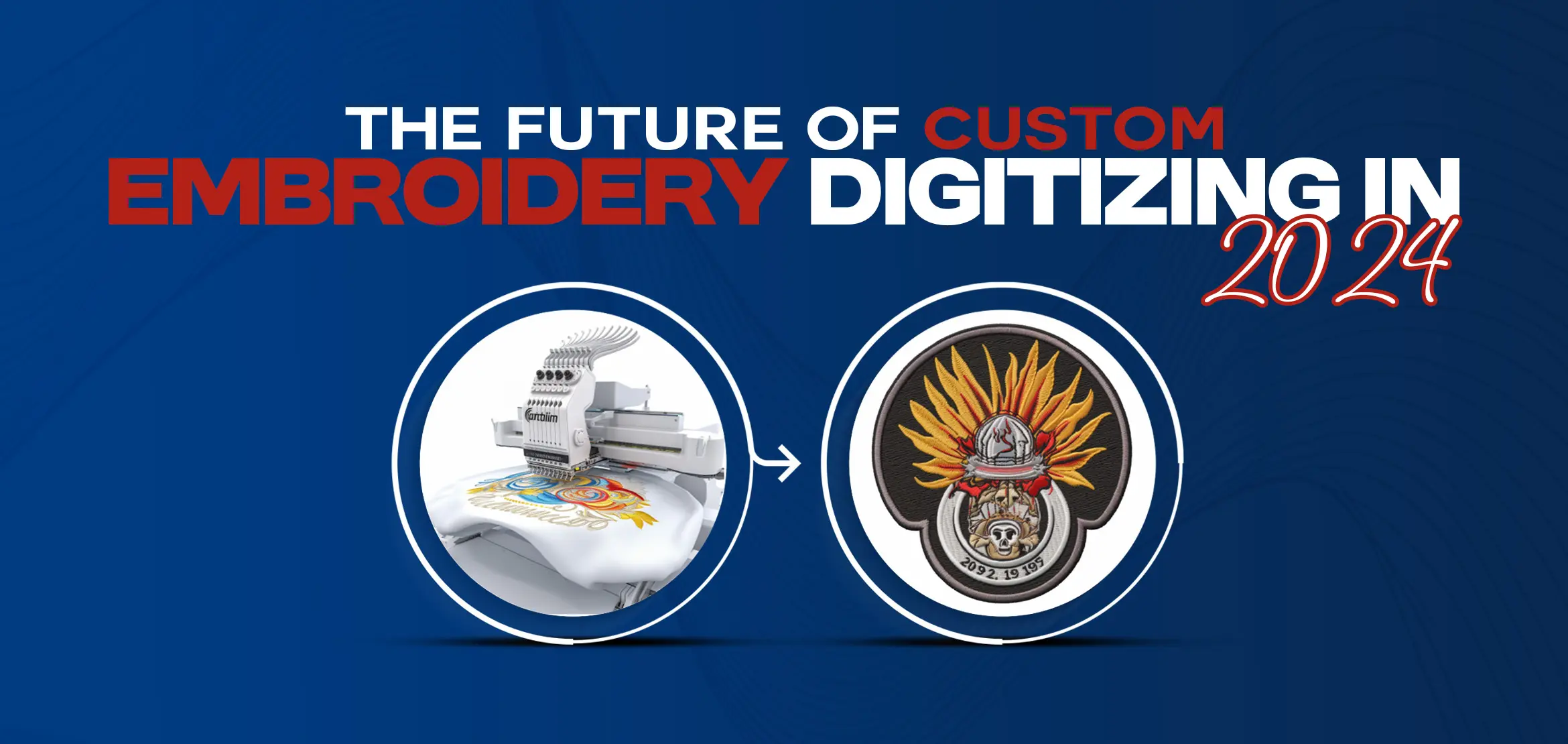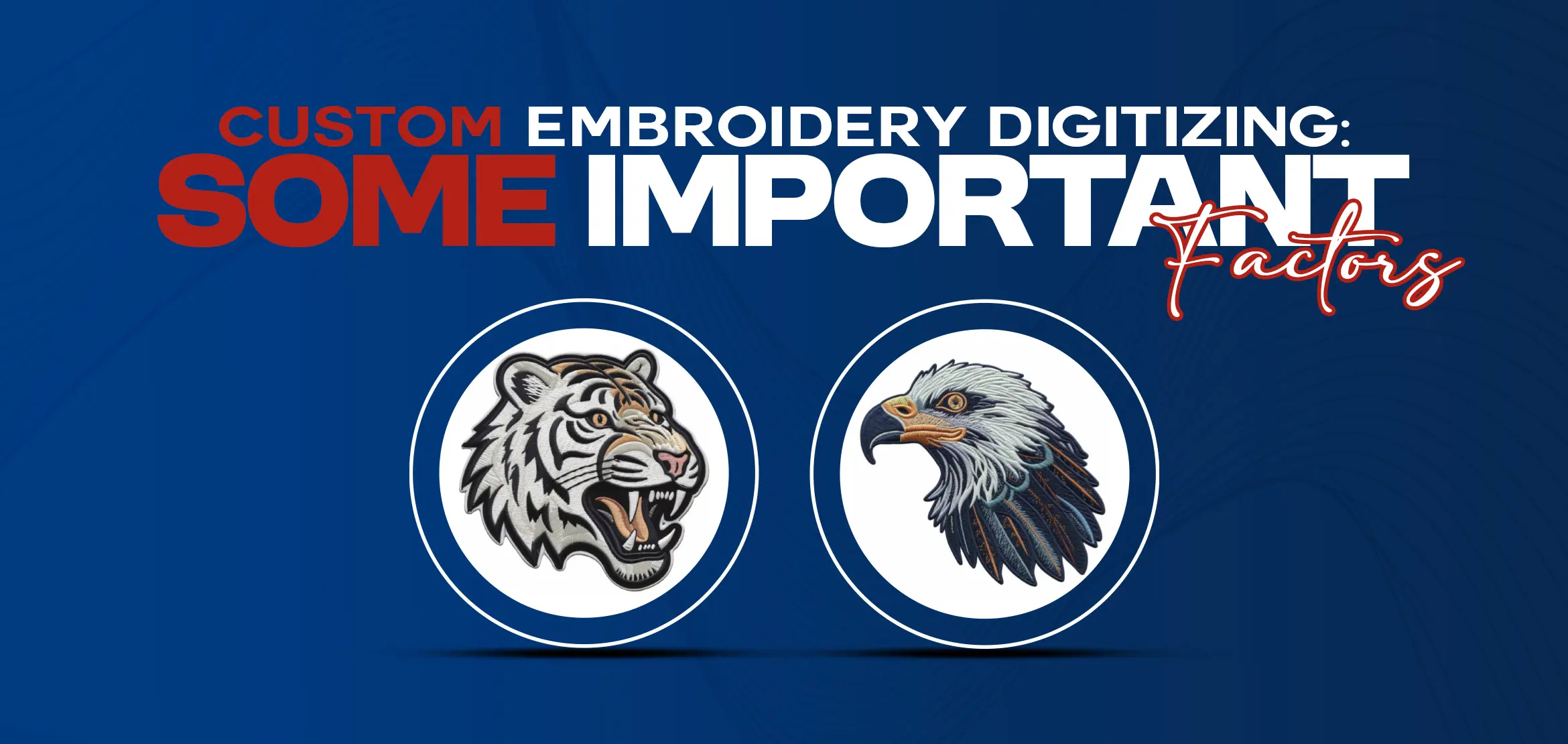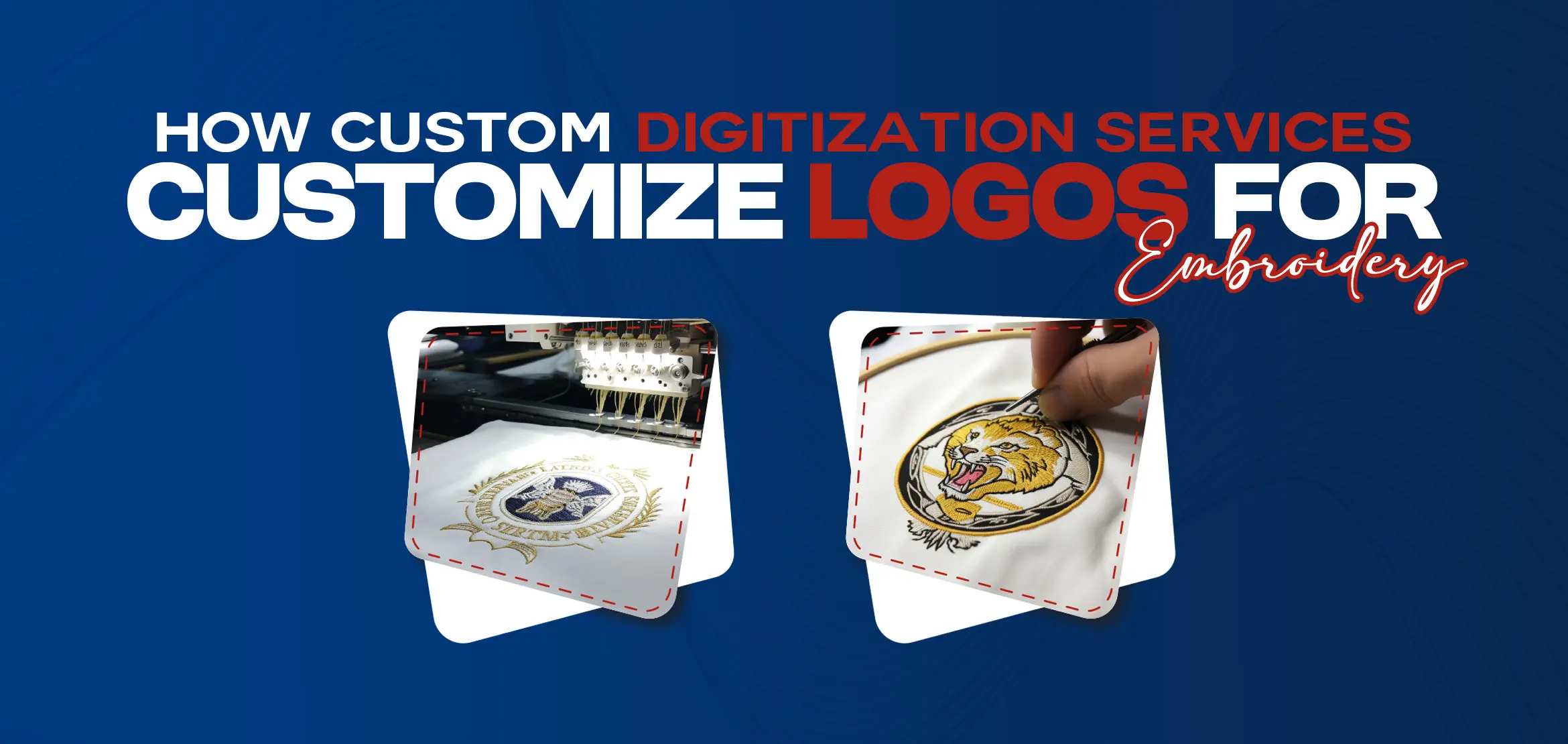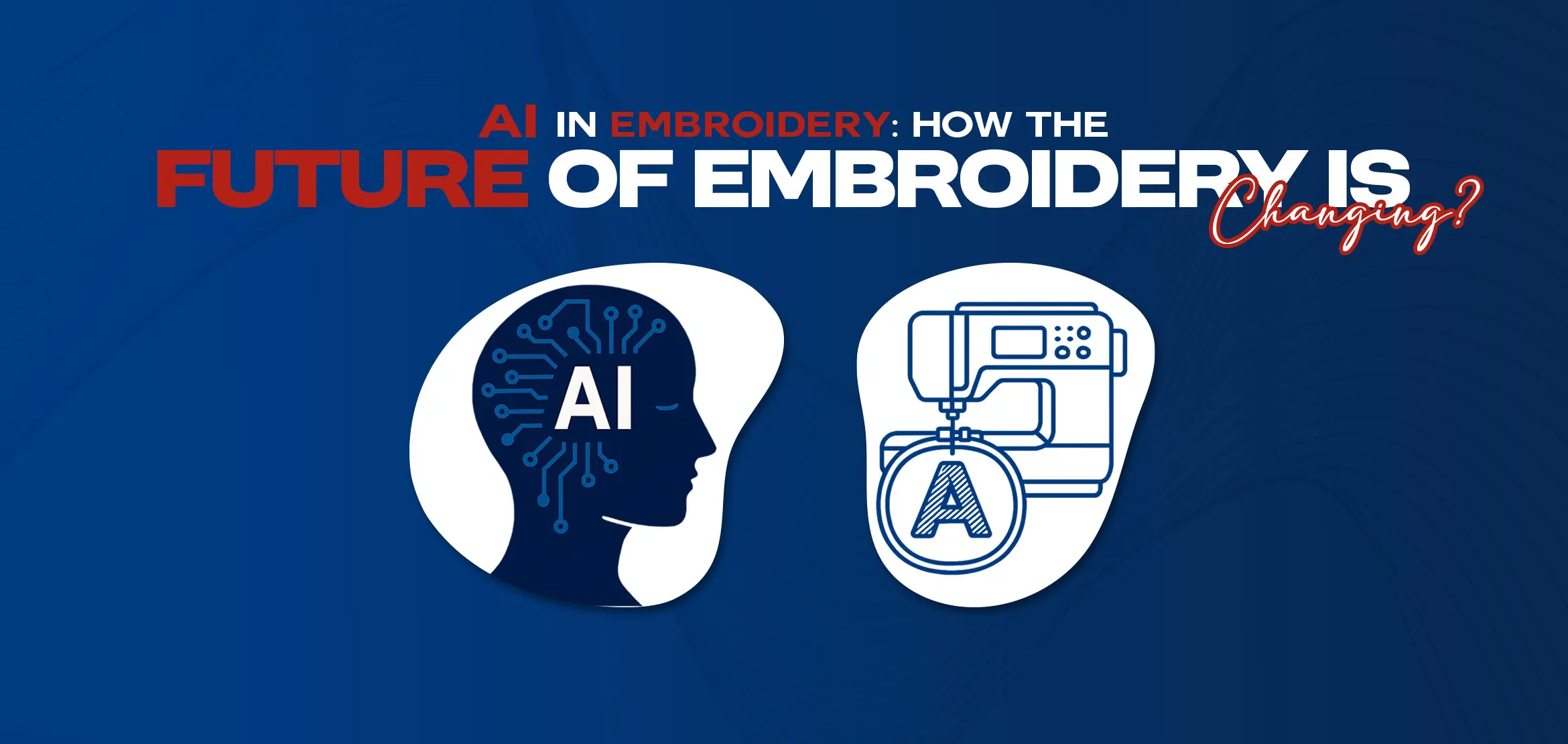
AI in Embroidery: Revolutionizing Art & Efficiency
AI in embroidery is making the process faster and easier. Before, people had to do everything by hand, which took a lot of time. AI helps create designs, choose stitches, and fix mistakes automatically. The embroidery looks better, takes less time, and wastes fewer materials. AI-powered embroidery machines and software can adjust stitches, work on different fabrics, and handle big orders without much effort.
Even small companies can utilize AI to save time and improve their work. As technology improves, embroidery will become even more advanced. AI will help people create new designs, work faster, and make embroidery more fun and simple for everyone.
Table Of Content
- What is AI Powered Embroidery?
- Difference Of AI vs. Conventional Embroidery
- Characteristic
- Position of AI in Embroidery Digitizing?
- Automatic Stitch Mapping
- Error Detection and Correction
- Smart Design Optimization
- Faster Image-to-Stitch Conversion
- Adaptive Stitch Adjustment
- AI-Powered Color and Thread Selection
- Enhanced Scalability for Bulk Orders
- Future of AI in Embroidery is Promising & Transformative
- Fully Automated Embroidery Machines
- AI-Generated Custom Designs
- Real-Time Error Detection and Self Correction
- Smart Fabric Adaptation
- Personalized AI Recommendations
- Voice Controlled and App Based Embroidery Machines
- AI Enhanced Mass Production
- AI-Powered Sustainable Embroidery
- Challenges and Limitations of AI in Embroidery
- High Initial Investment
- Learning Curve for Users
- Dependence on Technology
- Limited Creative Control
- Software and Hardware Compatibility Issues
- Data Security Risks
- Lack of Customization in Some Cases
- Ongoing Maintenance and Updates
- Conclusion
What is AI Powered Embroidery?
It guides the integration of artificial intelligence into embroidery machines and software to automate and enhance the process. It utilizes machine learning, automation, and intelligent algorithms to digitize designs, optimize stitch patterns, and improve efficiency.
This technology enables faster production, reduces errors, and allows for advanced customization, making embroidery more precise and accessible for businesses and hobbyists.
Difference Of AI vs. Conventional Embroidery
Embroidery has developed, especially with the introduction of AI technology. Classic embroidery counts on skilled crafters to design and stitch creations, while AI-powered embroidery machines can automate these tasks, resulting in faster and more precise production.
Characteristic
Position of AI in Embroidery Digitizing?
AI is making embroidery digitizing faster, more accurate, and easier for everyone. It automates complex tasks, reduces errors, and improves the overall quality of embroidery designs.
With AI-powered automated digitizing, even complex patterns can be converted into stitch-ready files precisely, making embroidery more efficient and accessible.
Automatic Stitch Mapping
Error Detection and Correction
Smart Design Optimization
Faster Image-to-Stitch Conversion
Adaptive Stitch Adjustments
AI-Powered Color and Thread Selection
Enhanced Scalability for Bulk Orders
Automatic Stitch Mapping
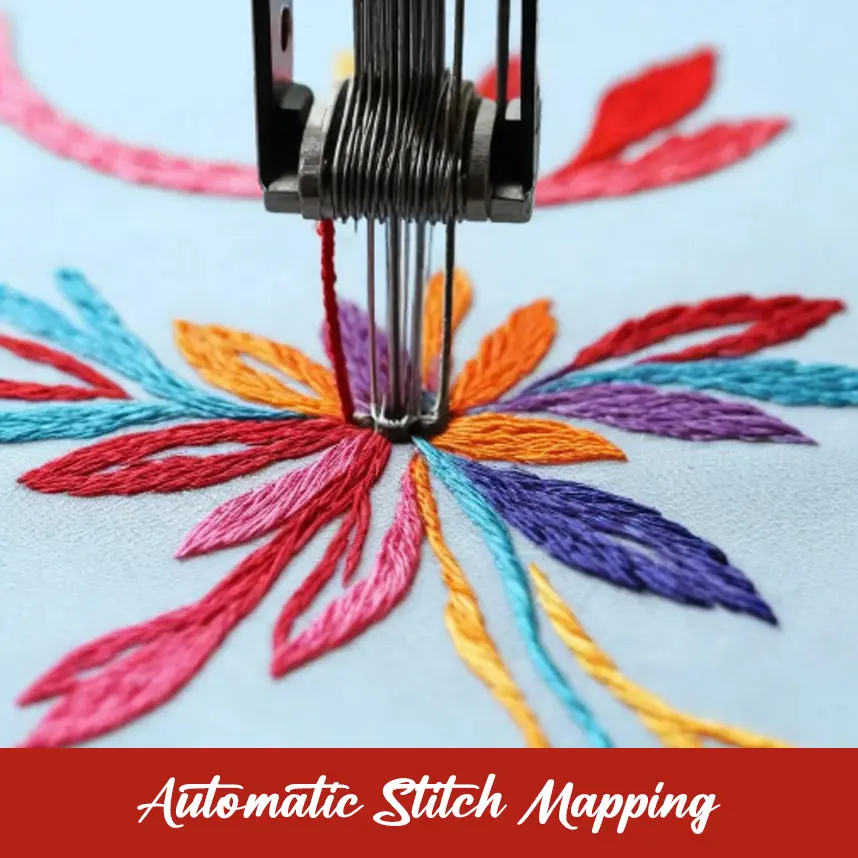
AI analyzes a design and automatically assigns the best stitch types and directions. This eliminates manual adjustments and ensures a smooth and precise embroidery outcome. It also optimizes stitch density to match the fabric type, reducing thread wastage.
Error Detection and Correction
AI in embroidery can detect mistakes in the digitized design before stitching begins. It identifies issues like overlapping stitches, incorrect stitch density, or uneven patterns and corrects them automatically. It helps reduce errors that might cause fabric damage or uneven embroidery.
Smart Design Optimization
AI enhances embroidery designs by adjusting stitch flow, density, and sequencing for a more polished look. It ensures that complex designs are digitized efficiently, reducing unnecessary stitches while maintaining high-quality output.
Faster Image-to-Stitch Conversion
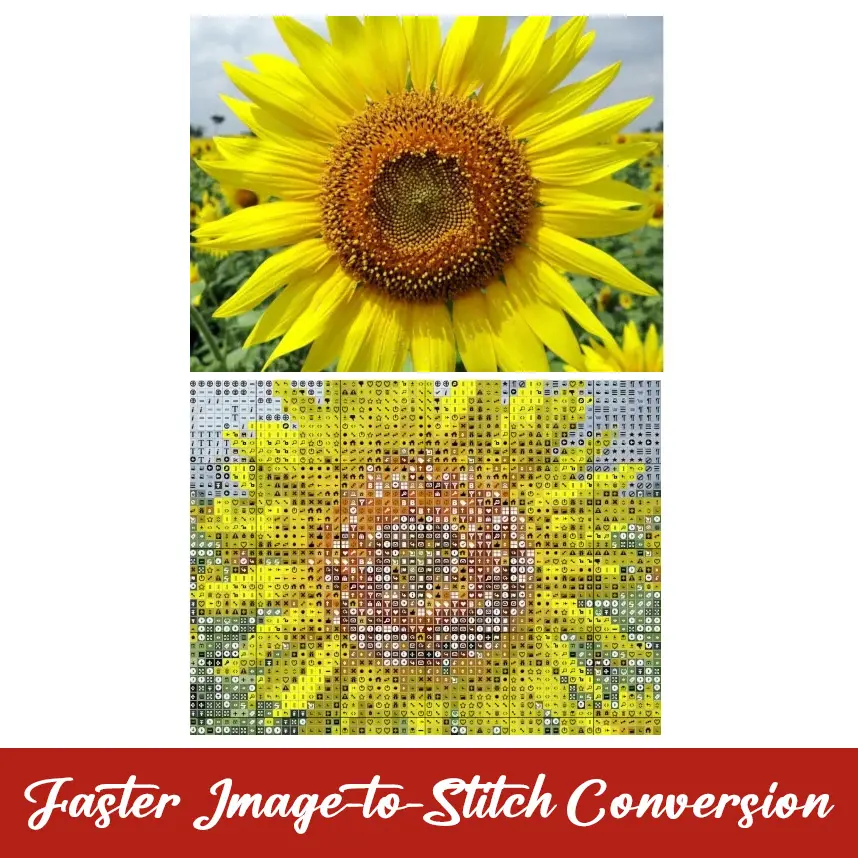
With AI, transforming an image into an embroidery file takes just a few clicks. The system automatically detects edges, fills areas with the proper stitch types, and converts the design into a machine-readable format within seconds, saving time.
Adaptive Stitch Adjustment
AI enables embroidery machines to alter stitches according to the fabric used. Other textiles, like cotton, silk, or denim, require further stitching techniques to provide smooth and high-quality embroidery. AI detects the fabric’s thickness, texture, and stretchability and automatically adjusts stitch density, tension, and length to prevent issues like puckering, loose threads, or fabric distortion.
For example, silk is mild and needs lighter stitches, while denim is thick and needs stronger, tighter stitches to hold the design properly. AI provides that each fabric gets the right stitch settings without requiring manual adjustments.
AI-Powered Color and Thread Selection
AI proposes the best thread colors that correspond to the original image or design. It can change color contrast to enhance design visibility on different fabric backgrounds, helping embroiderers achieve the best optical results.
Enhanced Scalability for Bulk Orders
AI-powered embroidery digitizing permits companies to increase production efficiency. It can generate multiple design versions for different fabric types and machine formats, making it easier to handle bulk orders without compromising quality.
Future of AI in Embroidery is Promising & Transformative
AI can revolutionize embroidery by automating operations, improving design accuracy, and making customization easier. AI technology will obtain more innovative, faster, and more efficient embroidery solutions for businesses and individuals.
Fully Automated Embroidery Machines AI-Generated Custom Designs Real-Time Error Detection and Self Correction Smart Fabric Adaptation Personalized AI Recommendations Voice Controlled and App Based Embroidery Machines AI Enhanced Mass Production AI-Powered Sustainable Embroidery AI will help embroidery machines work independently and manage everything from design selection to stitching without human intervention. These machines adjust settings automatically, reducing manual effort and ensuring consistent, high-quality embroidery. With AI, users can develop unique machine embroidery designs based on preferences, colors, and themes. AI-powered software will explore patterns, suggest modifications, and create digitized files instantly, making custom embroidery faster and more creative. AI will help embroidery machines detect errors like skipped stitches, thread breaks, or uneven tension in real-time. The machine will automatically correct these issues by adjusting stitch density or rethreading, reducing material waste, and improving efficiency. AI-powered embroidery machines will recognize different fabric types and adjust stitch patterns, thread tension, and needle settings accordingly. It will allow smooth embroidery on silk, denim, leather, and stretch fabrics without manual trial and error. Future AI-powered embroidery software will make embroidery design easier by providing intelligent suggestions based on past projects. It will recommend the best color combinations, stitch types, and design modifications, helping users create high-quality embroidery with minimal effort. AI creates innovative embroidery machines by counting voice control and mobile app integration. With voice commands, users can start, stop, or pause embroidery without touching the machine, making the process more leisurely. Mobile apps allow users to adjust settings, change designs, and monitor progress remotely. The app alerts users to fix issues quickly if there’s a thread break or error. This technology saves time, reduces manual work, and makes embroidery more convenient for beginners. Factories and businesses will profit from AI-powered embroidery machines that optimize large-scale production. AI will simplify workflows, manage multiple machines, and ensure consistent quality across bulk orders, reducing time and labor costs. AI will significantly enhance environmentally friendly embroidery practices by minimizing thread wastage, optimizing machine energy consumption, and suggesting sustainable materials. It will empower embroidery businesses to implement greener production methods while ensuring high levels of efficiency. AI is undeniably revolutionizing the embroidery industry by enhancing speed and precision. However, several challenges and limitations must be acknowledged to enable businesses and embroiderers to navigate potential hurdles effectively. One of the crucial barriers to pass is the cost associated with AI-powered embroidery machines and software. This investment can be substantial and requires careful review. Traditional embroiderers may need training to fully harness AI technology's capabilities. Adapting to new systems can take time and effort, but it is crucial for maximizing efficiency. A dependency on AI systems means that any mechanical failure or system crash can halt production. It's essential to have contingency plans in place to reduce downtime. While AI can efficiently develop designs, these may not always capture the creative nuances that skilled human digitizers can provide. And this can lead to a perception of reduced creativity in design. Not all AI embroidery software is compatible with existing machines. Businesses must ensure that their systems can merge seamlessly to avoid costly upgrades. The storage of digital designs in AI systems presents vulnerabilities to cyber threats. It's essential to implement robust security measures to protect sensitive design data. AI may encounter difficulties interpreting intricate hand-drawn or unique designs, limiting user customization options. Regular maintenance and software updates are necessary to ensure that AI-powered machines operate optimally. This ongoing requirement adds another layer of commitment for businesses. AI in embroidery is making everything faster, easier, and more accurate. From creating designs to stitching, AI is helping employment and individuals to sustain time and boost their quality. As technology grows, embroidery will improve, offering more creative and efficient ways to bring designs to life.Fully Automated Embroidery Machines
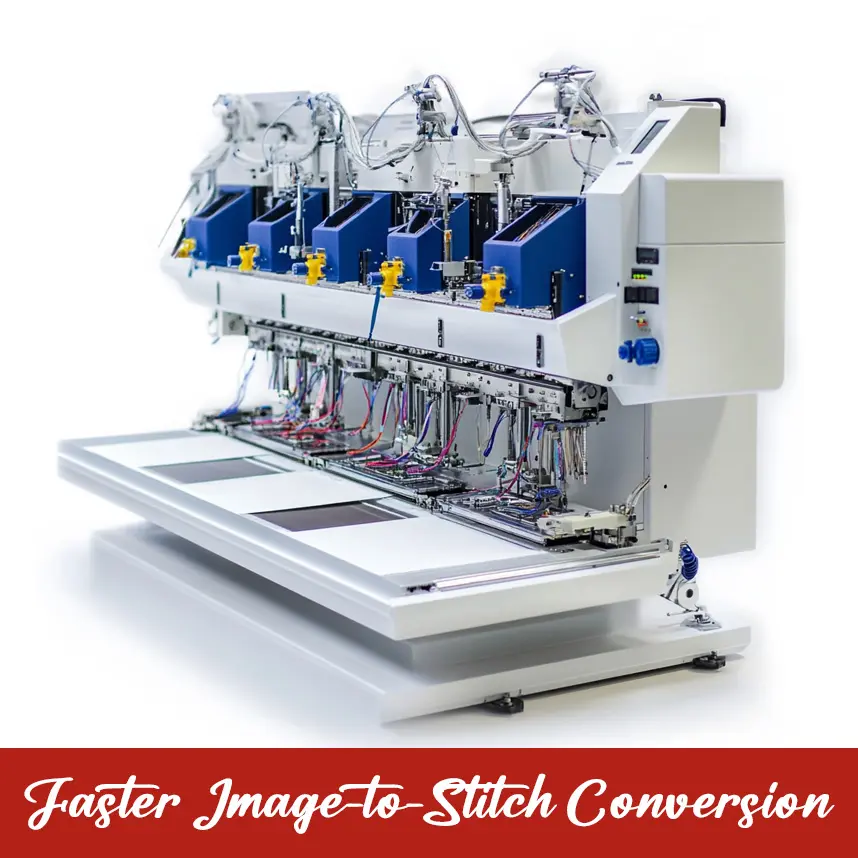
AI-Generated Custom Designs
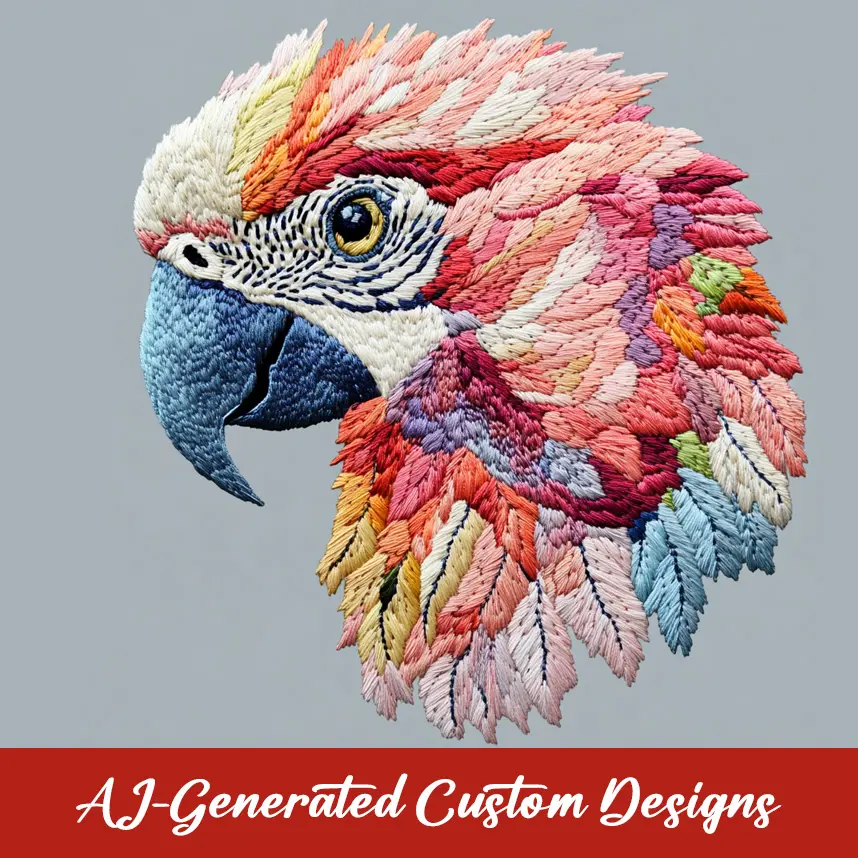
Real-Time Error Detection and Self Correction
Smart Fabric Adaptation
Personalized AI Recommendations
Voice Controlled and App Based Embroidery Machines
AI Enhanced Mass Production
AI-Powered Sustainable Embroidery
Challenges and Limitations of AI in Embroidery
High Initial Investment
Learning Curve for Users
Dependence on Technology
Limited Creative Control
Software and Hardware Compatibility Issues
Data Security Risks
Lack of Customization in Some Cases
Ongoing Maintenance and Updates
Conclusion



